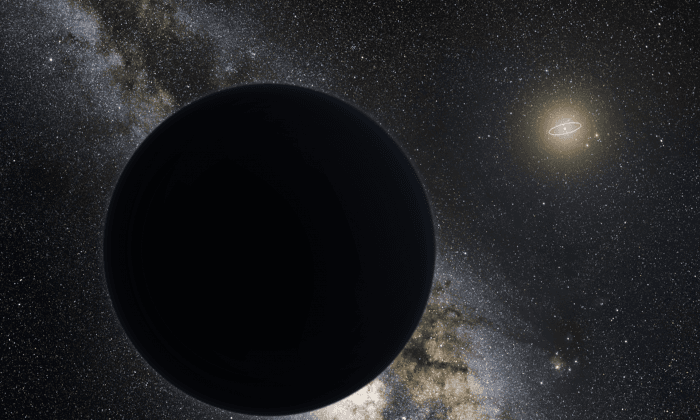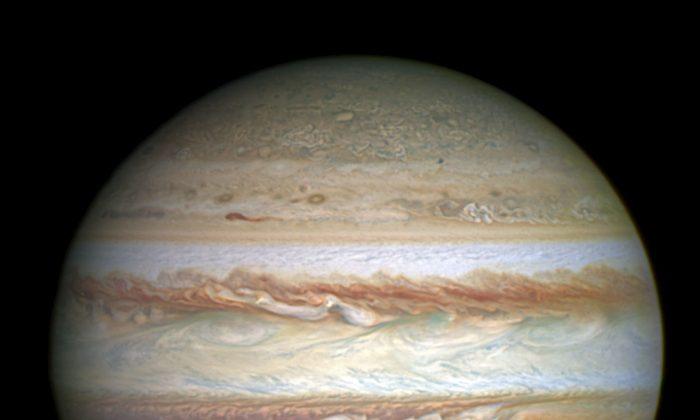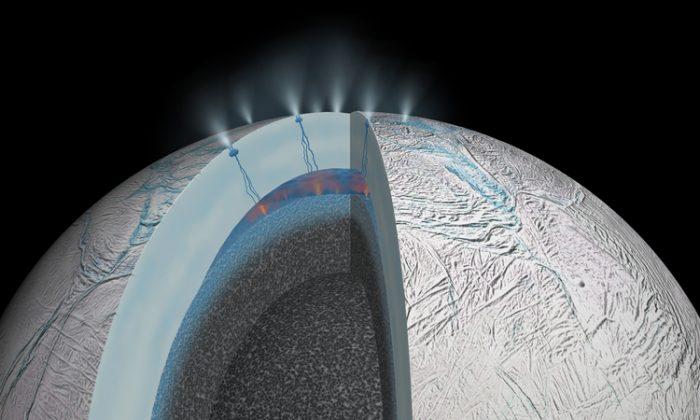
Other computer simulations assume that Planet Nine was a distant ice giant similar to Neptune and Uranus. They calculate the evolution of the size, temperature, luminosity and colour of such a body, having moved from its possible formation point nearer the sun to its distant position at about 700 AU.
This research suggests Planet Nine is like a “mini-Uranus”, with an iron core, silicate mantle, water ice shell and hydrogen/helium outer layers. Its temperature would be about -226°C (or 47 Kelvin) – and most of this would be internal heat rather than absorbed sunlight, which means it would be difficult to see with optical telescopes. In fact, the planet would reflect very little sunlight, which means it would be visible in infrared wavelengths (heat) instead of visible light.
The research is useful for scientists modelling and searching for the planet, as it helps them to know what they should look for.
It May Be Harder to Detect Than We Thought
The proposers of Planet Nine, and other astronomers, are busy using an array of telescopes to search for their target. These includes further work with data from the WISE survey, as well as Catalina Sky Survey and Pan-STARRS. So far, these searches have been unsuccessful. Current and planned searches are underway and proposed using telescopes including Subaru at Mauna Kea observatory, ALMA, the Dark Energy Survey and the James Webb Space Telescope.

But there may be other ways to spot it. For example, there was a prediction that the orbit of the Cassini spacecraft at Saturn may be affected by Planet Nine’s gravitational pull, based on its possible location in Cetus at about 630 AU (1 AU = the distance between the Earth and the sun). However, many scientists are sceptical of this.
So why haven’t we seen it? The study that modelled its interior also postulated how easy it would be to detect the object using surveys such as WISE, and estimated that Planet Nine’s current size is just 3.7 times Earth. This is considerably less than the 10 times our planet which was initially suggested. They therefore argue that it would be very hard to spot the planet with current instruments, but suggest future telescopes may be able to.
What’s more, some suggest that the planet may currently be at aphelion (its farthest point from the sun), which would also make it even more difficult to see. However, one study has managed to make the search area smaller by modelling the orbit and its inclination. The search is narrowing, but slowly.
It Probably Won’t Wipe Us Out
With its suggested orbit between 200 and 1,200-2,000 AU – much further away from us than the sun– it seems we should be safe from Planet Nine. But conspiracy theorists were quick to suggest that, as this may be the first of several such objects, at least one may have our name on it. However, there is no evidence that any known or postulated object poses any threat to Earth. But observers are keeping a careful eye on near-Earth objects for potential problems.
Planet Nine, if it exists, would certainly be a difficult object to detect. We know that the effects on six nearby objects look consistent with its existence, although even this is not universally accepted by astronomers. However, it is certainly strong enough to prompt a detailed search. Thanks to the computational modelling, the search is narrowing. At the same time, technology is developing and observations in this region are improving. If Planet Nine exists, it should be found in the next few years.
![]()
Andrew Coates, Professor of Physics, Deputy Director (Solar System) at the Mullard Space Science Laboratory, UCL. This article was originally published on The Conversation. Read the original article.



Friends Read Free